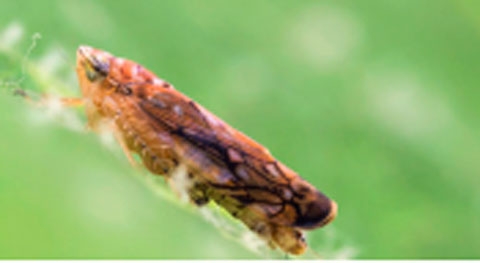While mating disruption has been a corner stone of IPM in pome and stone fruit orchards for many years, this work is an advanced and innovative approach to mating disruption, and a new direction for IPM.
Disrupting the vibrations insects use to find mates could help prevent the spread of disease in vineyards around the world.
Entomologists have taken the act of bugging conversations to a whole new level—recording sexual vibrations emitted by tiny insects living on grapevines in vineyards.
What may seem like a callous act of insect espionage is actually an innovative technique in pest management, decades in the making, chemical free and not lethal to anything.
Leafhopper soundless vibrations
Vineyards across the US and Italy are being devastated by incurable diseases caused by bacteria hitching a ride on leafhoppers—a diverse group of plant-piercing insects closely related to cicadas.
Thanks to some innovative research, scientists are using a technique called vibrational mating disruption to interrupt male-leafhopper courtship songs, preventing them from finding mates and slowing population growth.
Leafhoppers use soundless vibrations to exchange information with each other. They are quite small (commonly 6–13 mm long), are strong and have piercing-sucking mouthparts they use to access plant sap.
A male leafhopper eager to woo a female rapidly vibrates its abdomen, sending low-frequency vibrations through plants. If a female picks up the signal and responds, an intricate vibrational duet ensues.
The male moves closer and closer to the female, guided by her vibrational responses, eventually the two find each other and mate.
In southern California, an invasive leafhopper called the glassy-winged sharpshooter (Homalodisca vitripennis) transmits Pierce’s disease — an incurable grape-plant infection.
In California alone, Pierce’s disease results in about US$104 million a year in lost production and costs associated with defending their crops from the pests. Similarly, in Italy, the American grapevine leafhopper (Scaphoideus titanus) transmits Flavescence dorée disease—a highly contagious and incurable infection of grapevines in Europe.
Grape farmers commonly protect crops from insects by repeatedly applying broad-spectrum chemical pesticides.
An alternative approach is to use traps laced with highly specific insect-attracting scents called pheromones that lure pests into killing chambers. But not all insects have the chemical receptors necessary to respond to pheromones, so a gap in pest management remains.
(cont. next month)
See this article in Tree Fruit September 2018




















